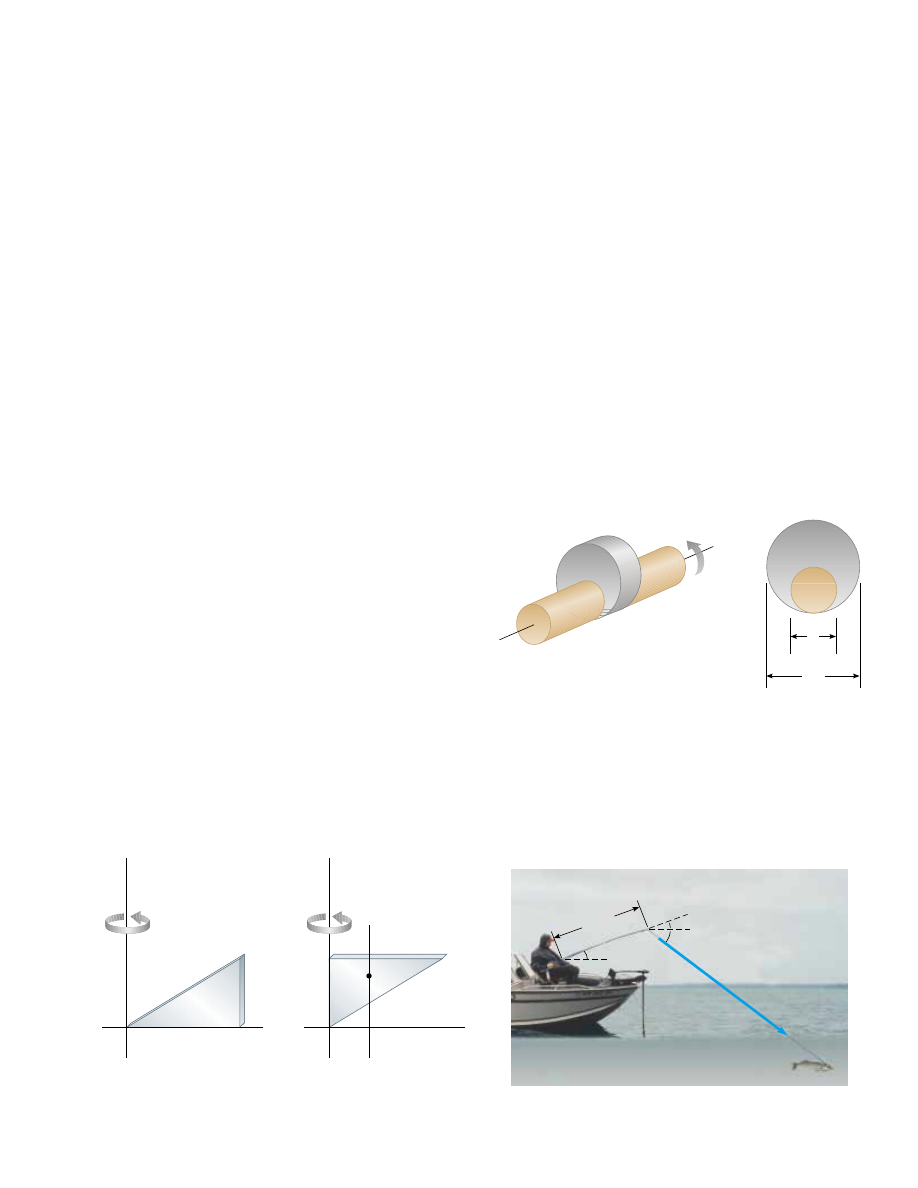Physics For Scientists And Engineers 6E - part 82

Problems
325
25. A uniform thin solid door has height 2.20 m, width
0.870 m, and mass 23.0 kg. Find its moment of inertia for
rotation on its hinges. Is any piece of data unnecessary?
26. Attention! About face! Compute an order-of-magnitude esti-
mate for the moment of inertia of your body as you stand
tall and turn about a vertical axis through the top of your
head and the point halfway between your ankles. In your
solution state the quantities you measure or estimate and
their values.
27.
The density of the Earth, at any distance r from its center,
is approximately
. "
[14.2 % 11.6(r/R)] + 10
3
kg/m
3
where R is the radius of the Earth. Show that this density
leads to a moment of inertia I " 0.330MR
2
about an axis
through the center, where M is the mass of the Earth.
28.
Calculate the moment of inertia of a thin plate, in the
shape of a right triangle, about an axis that passes through
one end of the hypotenuse and is parallel to the opposite
leg of the triangle, as in Figure P10.28a. Let M represent
the mass of the triangle and L the length of the base of the
triangle perpendicular to the axis of rotation. Let h repre-
sent the height of the triangle and w the thickness of the
plate, much smaller than L or h. Do the calculation in
either or both of the following ways, as your instructor
assigns:
(a) Use Equation 10.17. Let an element of mass con-
sist of a vertical ribbon within the triangle, of width dx,
height y, and thickness w. With x representing the loca-
tion of the ribbon, show that y " hx/L. Show that the
density of the material is given by . " 2M/Lwh. Show
that the mass of the ribbon is dm " .yw dx " 2Mx dx/L
2
.
Proceed to use Equation 10.17 to calculate the moment
of inertia.
(b) Let I represent the unknown moment of inertia
about an axis through the corner of the triangle. Note
that Example 9.15 demonstrates that the center of mass
of the triangle is two thirds of the way along the length L,
from the corner toward the side of height h. Let I
CM
rep-
resent the moment of inertia of the triangle about an axis
through the center of mass and parallel to side h.
Demonstrate that I " I
CM
)
4ML
2
/9. Figure P10.28b
shows the same object in a different orientation.
Demonstrate that the moment of inertia of the triangular
plate, about the y axis is I
h
"
I
CM
)
ML
2
/9. Demonstrate
that the sum of the moments of inertia of the triangles
shown in parts (a) and (b) of the figure must be the mo-
ment of inertia of a rectangular sheet of mass 2M and
length L, rotating like a door about an axis along its edge
of height h. Use information in Table 10.2 to write down
the moment of inertia of the rectangle, and set it equal to
the sum of the moments of inertia of the two triangles.
Solve the equation to find the moment of inertia of a tri-
angle about an axis through its center of mass, in terms
of M and L. Proceed to find the original unknown I.
29.
Many machines employ cams for various purposes, such as
opening and closing valves. In Figure P10.29, the cam is a
circular disk rotating on a shaft that does not pass
through the center of the disk. In the manufacture of the
cam, a uniform solid cylinder of radius R is first ma-
chined. Then an off-center hole of radius R/2 is drilled,
parallel to the axis of the cylinder, and centered at a point
a distance R/2 from the center of the cylinder. The cam,
of mass M, is then slipped onto the circular shaft and
welded into place. What is the kinetic energy of the cam
when it is rotating with angular speed & about the axis of
the shaft?
Section 10.6 Torque
30. The fishing pole in Figure P10.30 makes an angle of 20.0'
with the horizontal. What is the torque exerted by the fish
about an axis perpendicular to the page and passing
through the fisher’s hand?
(a)
h
xx
L
y
(b)
h
y
CM
Figure P10.28
2R
R
Figure P10.29
100 N
20.0
°
20.0
°
37.0
°
2.00 m
Figure P10.30